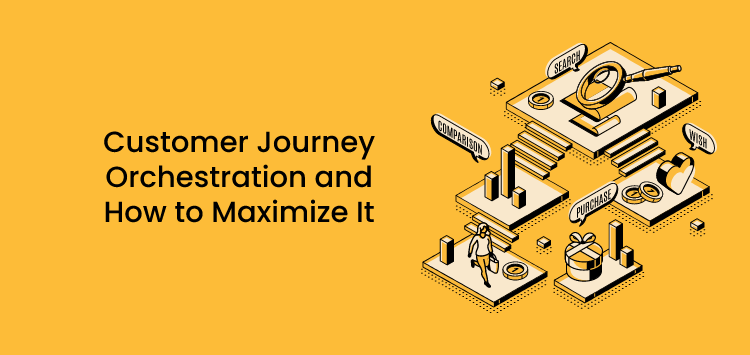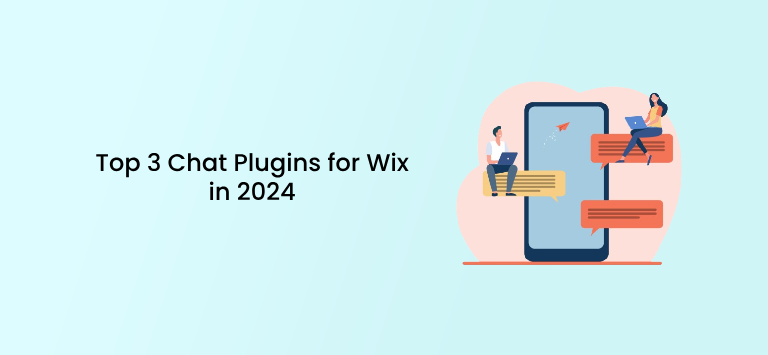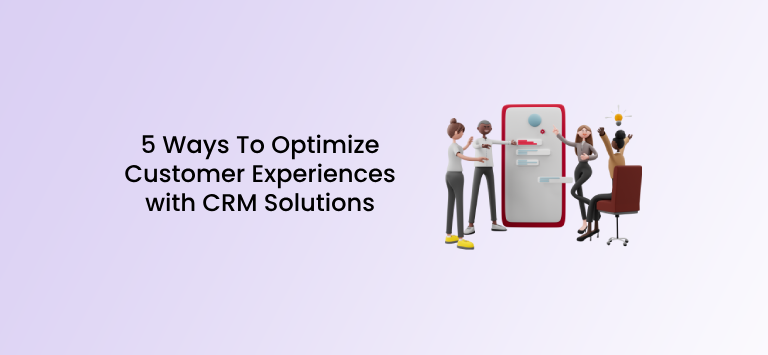Customer journey orchestration—does your business need it? What exactly is it? Your questions are answered, and more, right here.
Customer journey orchestration is more than providing an immersive customer experience. However, that’s important, too. Orchestrating the customer journey requires enabling the most relevant interactions at customer touchpoints to maximize their experience with your brand.
Customer journey orchestration enables businesses to engage potential and actual customers in real time and through the most effective channels. It’s a goal for many marketing, CX, and operations leaders to consider how they can use customer journey orchestration to deliver more tailored experiences that drive improved business outcomes.
In this article, we’ll look at how you can implement customer journey orchestration to make better decisions about delivering personalized experiences for all your customers on whichever platforms they choose.
What is customer journey orchestration?
Before we get deeper into customer journey orchestration, let’s consider a typical customer journey. It might look a bit like this:
- A customer encounters your brand via an organic search engine
- A said customer browses the landing page and clicks on a link to navigate to another area of your website
- The customer then goes to your website solutions pages to learn more about how your business can solve their problem
- After this, the customer navigates to your customer testimonials section to read some social proof from other like-minded customers who have previously purchased from your business.
- The customer leaves the site.
Throughout this journey, your business has five opportunities to maximize the customer experience.
Customer journey orchestration is a unifying technology that leverages customer journey data from every channel, source, or system. Learning and understanding customer conversations and interactions across all channels and platforms become more than an omnichannel approach—they offer more data and context for businesses to capitalize on.
Orchestrating means taking dynamic action toward optimizing each journey, using real-time and accurate customer data to guide the operation. You may also wish to try proxies as a server to offer more security and protection.

Customer expectations are high. They expect businesses to be able to solve their issues instantly in a personalized fashion. They want the companies they speak to remember them and their preferences and offer personalized product recommendations.
It’s up to you to provide an engaging experience that your customers feel is dynamic and meaningful.
Customer journey orchestration allows you to:
- Personalize messaging: deliver the right message to the right customer at the right time. Providing value at every stage of the customer journey ensures that each interaction impacts and encourages the customer to remain loyal to your brand. Loyal customers may become company ambassadors and create different types of user-generated content that help promote your brand.
- Resolve issues faster: addressing and solving your customers’ problems quickly is the quickest route to customer satisfaction and advocacy—not to mention upsell opportunities. One way to resolve issues fast is to use live chat software like Chatway or one of these Intercom alternatives.
- Improve and meet ROI metrics: harnessing AI and intelligent data from data analyst training methods help you tailor customer experiences to complete your customers’ needs accurately.
- Establish what’s working: gain an understanding of the customer engagement tactics that are the most effective to pivot your marketing campaigns accordingly.
Key customer journey orchestration use cases
Businesses deploy journey orchestration when they want to understand their customers better and act on their wants and needs. Key use cases for customer journey orchestration include:
Streamlining cross-channel communications
Businesses in the financial services often have customers who fall into different product categories.
For instance, the same customer may be interested in mortgages, credit cards, and car loans. Rather than treating customers separately for each service, journey orchestration enables a cross-channel approach to deliver relevant messages to each customer.
Enhancing customer service
A well-orchestrated journey management tool connects customer experience data to identify a customer who’s likely to reach out to customer service and why they’re likely to reach out.
Connections with CRM data and intelligent decision capabilities allow you to route calls to the customer service reps that a customer has had positive previous experiences.
Not only that, but all the data from the CRM at reps’ fingertips make first-call resolutions more likely and reduce customer churn.

How to implement customer journey orchestration
We’ve looked at a typical customer journey through a business’s website. Now, it’s time to look at it again through the lens of customer journey orchestration:
- A customer encounters your brand via an organic search engine. Customer journey orchestration tools recognize this customer as a new user and tailor the welcome message appropriately.
- Said customer browses the landing page and clicks on a link to navigate to another area of your website. Create maps to deliver data-driven individual experiences to take your customers to the most relevant next stage.
- The customer then goes to your website solutions pages—for instance, inventory management software features—to learn more about how your business can solve their problem. Rather than leaving the customer to navigate the site unaided, customer journey orchestration tools can identify that this is a new real-time user and deliver information to guide them through the site.
- After this, the customer navigates to your customer testimonials section to read some social proof from other like-minded customers who have previously purchased from your business. Implement intuitive workflows to guide the customer to the next step in their journey.
- The customer leaves the site. Instead of losing the customer, implement a popup discount code or incentive to encourage the customer to sign up for a service.
To properly implement customer journey orchestration, you’ll need a technology platform, as you would if you wanted to analyze data analytics and machine learning in manufacturing industries to optimize supply chains and personalize journeys in real-time.
Customer journey software uses technology like machine learning to interpret behavioral data and recommend the best course of action at that moment. It’s quickly becoming the key technology enabler for businesses seeking a customer-centric approach.

To individualize customer experiences, use technology to fuse journey analysis from customer interactions at the point of interaction to orchestrating the end-to-end experience. Successful customer journey orchestration often requires breaking down silos between departments to operate as one team.
Look to build cross-functional teams that look at the journey holistically—key individuals in this process are chief information officers, marketing leaders, and customer experience professionals. These teams must challenge the ethos of the business to seek longer-term metric solutions that represent the customer lifecycle.
Effective journey orchestration solutions should offer transparent visualization of journeys at an individual level and allow the business to quickly identify common trends in the customer database.
Get started with customer journey orchestration
Check out the following steps to set the foundations for a robust journey orchestration strategy:
- Identify objectives
Understand exactly what your business wants to achieve. Is it reducing customer churn? More sales? More leads? Be sure to nail your objectives to succeed.
- Add resources
What resources do you need to make them happen based on your objectives? Identify what you require, whether it’s new tech, buy-in from management, or something else. You can also have SOP templates in place that can outline your processes and provide your team with direction on how to orchestrate solutions.
- Test
Plan journey orchestration in one area of your business that will have the most significant impact. By starting with one aspect, you’ll understand what you’ll need regarding resources, organizational change, and effort to roll it out across the entire business.
For example, email marketing test journey orchestration project could include objectives to increase customer engagement and product awareness.
Before unleashing your next email campaign, map out specific journey triggers to determine what you want to happen next after a particular link is clicked. This effort should focus on marketing, sales, and customer success teams for the best results.

Suppose a recruitment provider opens one of your marketing emails. In that case, you could set it to trigger an automated event to retrieve their record from your CRM and alert the closest sales rep that the prospect engaged with an email.
A personalized email from the rep with extra resources, such as a freelance recruiter contract template or an appointment request, would be triggered. If the prospect clicks to visit the business website, a customized homepage could be served that displays relevant information that speaks directly to the recruitment space.
How to measure the success of customer journey orchestration
Your usual website metrics don’t necessarily apply to customer journey orchestration projects. Because journey orchestration works across the entire experience, individual metrics like conversions won’t tell you the whole story.
Instead, look at KPIs like pipeline velocity, customer lifetime value, and different sources of engagement data.
Wrapping up
Purely offering your customers a standard service or product is no longer cutting it. Customers want and demand more from brands—and to keep up with the competition, you must deliver it. Improving your users’ website experience is a start.
But the key to customer journey orchestration is to maximize customer data to drive personalized journeys that lead to the best outcome for your business.









